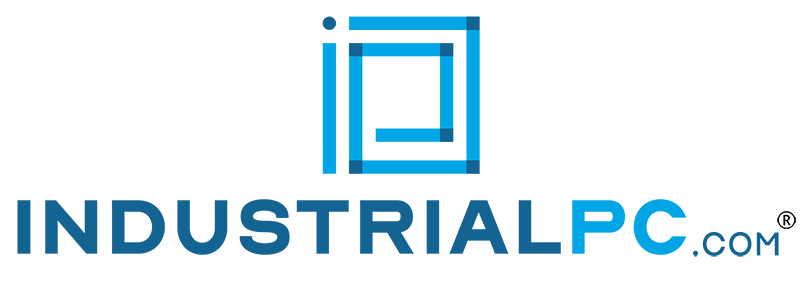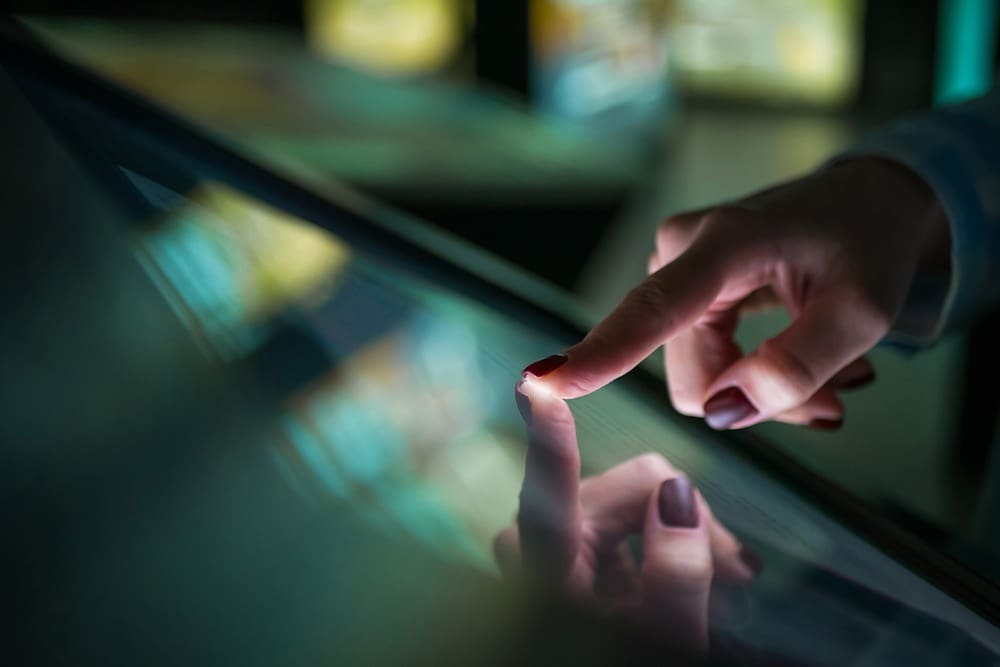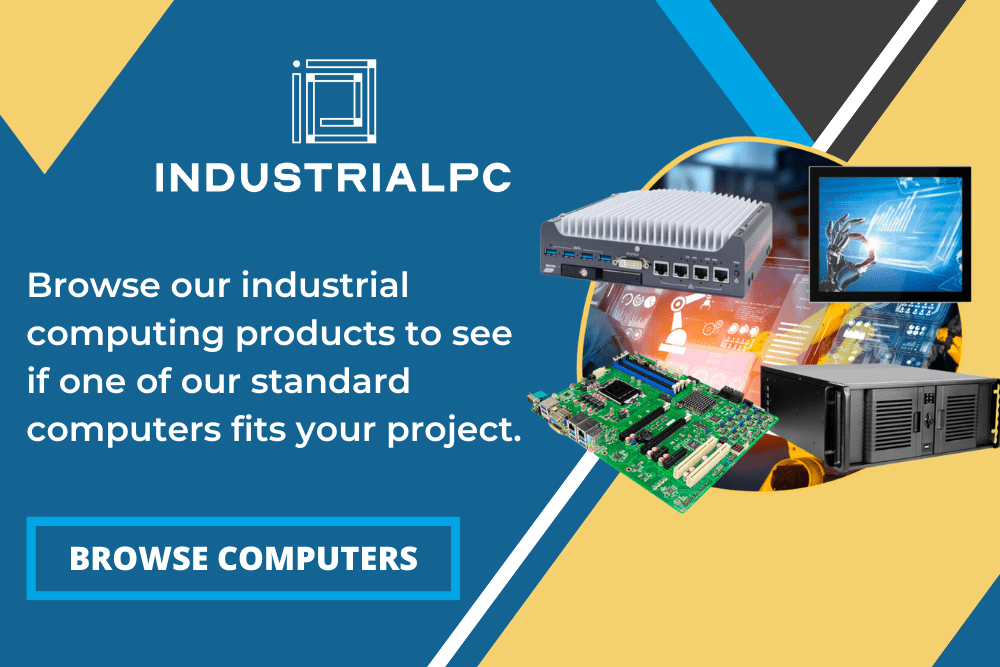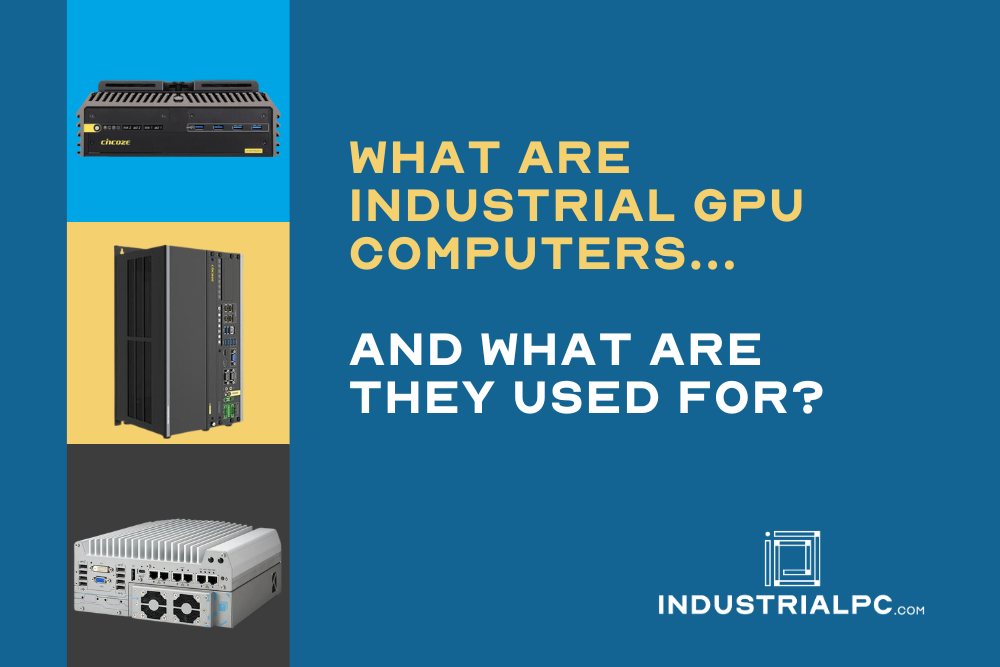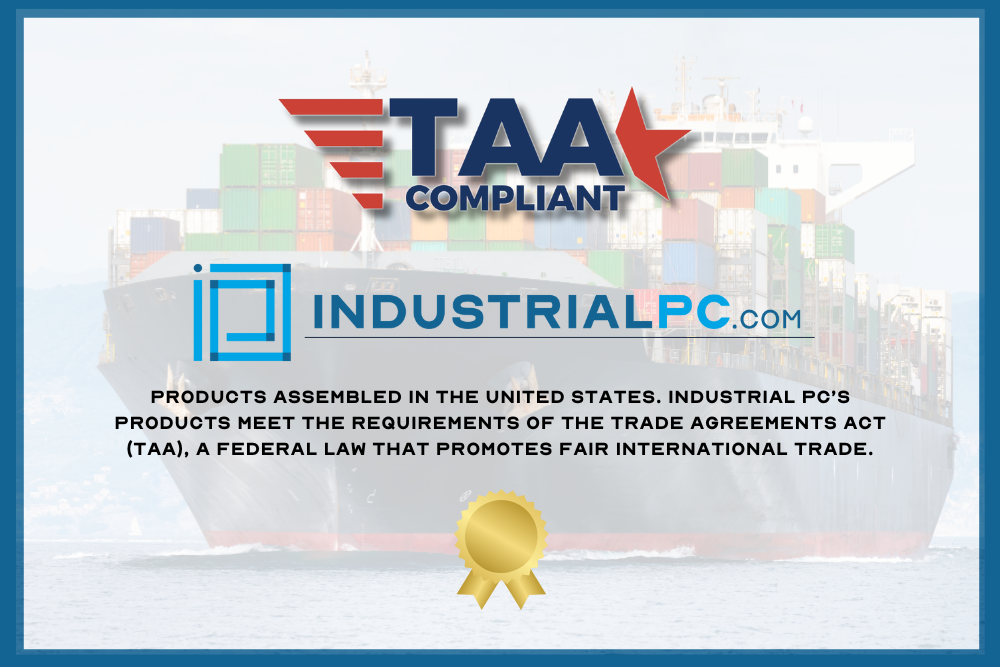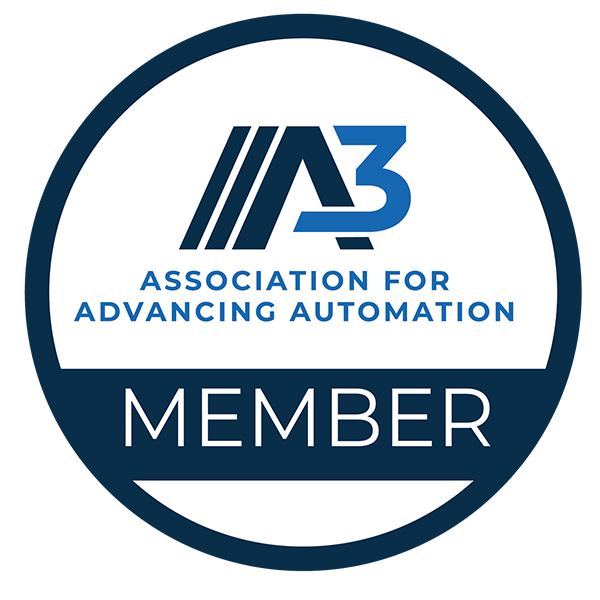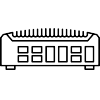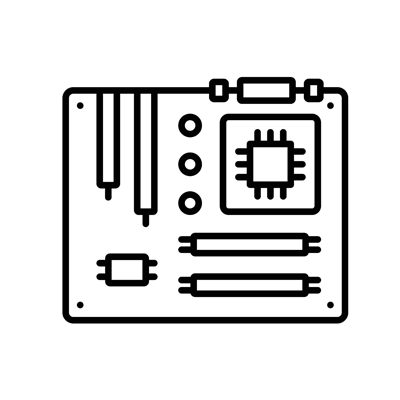A touchscreen is a 2 dimensional sensing devices. Industrial PC, Inc. supports several types of touchscreen technologies:
|
|
|
|
Resistive Touchscreen Technology
The resistive touchscreen consists of a flexible top layer made of Polyethylene (PET) 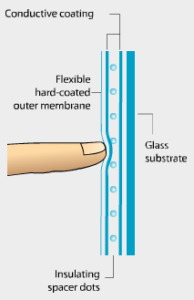 and a rigid bottom layer made of glass. Both the layers are coated with a conducting compound called Indium Tin Oxide (ITO) and then spaced with spacers. While the monitor is operational, an electric current flows between the two layers. When a touch is made, the flexible screen presses down and touches the bottom layer. A change in electrical current is hence detected and the coordinates of the point of touch is calculated by the controller and parsed into readable signals for the operating system/software to react accordingly.
and a rigid bottom layer made of glass. Both the layers are coated with a conducting compound called Indium Tin Oxide (ITO) and then spaced with spacers. While the monitor is operational, an electric current flows between the two layers. When a touch is made, the flexible screen presses down and touches the bottom layer. A change in electrical current is hence detected and the coordinates of the point of touch is calculated by the controller and parsed into readable signals for the operating system/software to react accordingly.
Industrial PC, Inc. utilizes both four-wire and five-wire resistive touch techniques.
The Four-wire Resistive Touchscreen uses both the layers to calculate the axes information of the touch. Touch measurement in the 4-wire is a 2 step process. The x-coordinate of the touch point is calculated by creating a voltage gradient on the flexible layer, and the y-coordinate is determined by creating a voltage gradient along the bottom layer.
Pros and Cons: Consequently, the 4-wire resistive touchscreen is less durable, feebly accurate and can drift with environmental changes. However these negatives are divulged only with large-sized touchscreen. These are relatively cheap, easily available and consume low power.
The Five-wire Resistive Touchscreen do not uses the coversheet (flexible layer) in determining the touch coordinate. All the position sensing is employed on the stable glass layer. In this design, one wire goes to the coversheet and four wires are deployed to the four corners of the bottom sheet. The coversheet only acts as a voltage measuring probe. The functioning of the touchscreen remains unscathed even with changes in the uniformity of the conductive coating over the coversheet.
Pros and Cons: Highly durable, accurate and reliable. This technology involves complex electronics and is expensive. However, it can be used in sizes upto 22”.
Capacitive Touchscreen Technology
The Capacitive Touchscreen Technology is by far the most durable. It is by far the most popular if we include the SmartPhone and Tablet products.
Surface Capacitive Technology
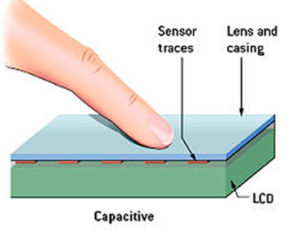 Surface-Capacitive screens, in this technique only one side of the insulator is coated with a conducting layer. While the monitor is operational, a uniform electrostatic field is formed over the conductive layer. Whenever, a human finger touches the screen, conduction of electric charges occurs over the uncoated layer which results in the formation of a dynamic capacitor. The computer or the controller then detects the position of touch by measuring the change in capacitance at the four corners of the screen.
Surface-Capacitive screens, in this technique only one side of the insulator is coated with a conducting layer. While the monitor is operational, a uniform electrostatic field is formed over the conductive layer. Whenever, a human finger touches the screen, conduction of electric charges occurs over the uncoated layer which results in the formation of a dynamic capacitor. The computer or the controller then detects the position of touch by measuring the change in capacitance at the four corners of the screen.
Pros and Cons: The surface capacitive touchscreen is moderately durable and needs calibration during manufacture. Since a conductive material is required to operate this screen, passive stylus cannot be used for surface capacitive touchscreen.

The Projective Capacitive Screen contains a sensor at every intersection of therow and column, thereby increasing the accuracy of the system. There are two types of projected capacitive touchscreen: Mutual capacitance and SelfCapacitance.
Surface Acoustic Wave Touchscreen Technology
The Surface Acoustic Wave Touchscreen technology contains two transducers (transmitting and receiving) placed along the 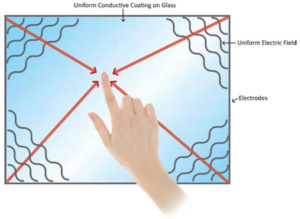 X-axis and Y-axis of the monitor’s glass plate along with some reflectors. The waves propagate across the glass and are reflected back to the sensors. When the screen is touched, the waves are absorbed and a touch is detected at that point. These reflectors reflect all electrical signals sent from one transducer to another. This technology provides excellent throughput and image clarity.
X-axis and Y-axis of the monitor’s glass plate along with some reflectors. The waves propagate across the glass and are reflected back to the sensors. When the screen is touched, the waves are absorbed and a touch is detected at that point. These reflectors reflect all electrical signals sent from one transducer to another. This technology provides excellent throughput and image clarity.
Pros and Cons: 100% clarity is obtained as no metallic layers are present on the screen, it can be operated using passive devices like stylus, glove or finger nail. Screen can get contaminated with much exposure to dirt, oil which may haunt its smooth functioning.
Infrared Touchscreen Technology
In the Infrared Touchscreen Technology, an array of X- and Y- axes are fitted with pairs of IR Leds and photo detectors. The photo detectors detect any change in the pattern of light emitted by the Leds whenever the user touches the monitor/screen.
Pros and Cons: This touchscreen technology has many advantages over the 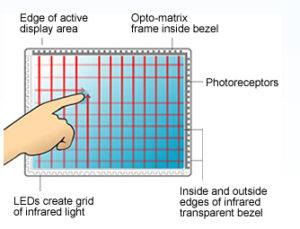 conventional QWERTY keyboard and monitor. It is very flexible as opposed to its physical counterparts since the digital displays can be configured anytime at will of the user as per the functionalities. Touchscreen allows users to customize the interface for example alteration of language and size. By adjusting the size of the keyboard, user can utilize the spare area for display and other uses. With the decreasing size of computers and tablets these days, touchscreen is an added advantage. Multiple functions has to be performed on a small screen, touchscreen allows switching to a function at user’s will. For example, virtual keyboard which is an application of touchscreen is displayed on the screen only when the user allows it to be.
conventional QWERTY keyboard and monitor. It is very flexible as opposed to its physical counterparts since the digital displays can be configured anytime at will of the user as per the functionalities. Touchscreen allows users to customize the interface for example alteration of language and size. By adjusting the size of the keyboard, user can utilize the spare area for display and other uses. With the decreasing size of computers and tablets these days, touchscreen is an added advantage. Multiple functions has to be performed on a small screen, touchscreen allows switching to a function at user’s will. For example, virtual keyboard which is an application of touchscreen is displayed on the screen only when the user allows it to be.
